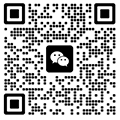

The verb + 出来 (chūlái) construction is a common pattern in Chinese grammar. It's useful for adding information to verbs. There are two main usage patterns for the verb + 出来 construction. Learn how to use and understand them with this guide.
The first usage of this pattern is to express physical movement. The characters 出 and 来 are literally “out” and “come”, so this pattern means “come out”. When verb + 出来 is used in this way, it simply expresses that the during the action of the verb, something comes out of something else.
This pattern is fairly easy to use. Simply place 出来 right after the verb, and you're done.
Here are some examples:
我那么紧张,感觉心都要跳出来了。
一个犯人从监狱里逃出来了。
我从盒子里拿出来了一块巧克力。
As you can see, in this pattern 出来 expresses the physical movement of one thing out of another.
The same construction can also be used to express more metaphorical meanings. These include:
the success of an action
the completion of an action
recognition
gaining information from an action
In any case, the meaning here is just a metaphorical version of the one above. Something is coming out from the action, but it could be information or some sort of result. Let's look at some examples to make this clearer:
我能听出来他们的声音。
Wǒ néng tīng chūlái tāmen de shēngyīn. I recognize their voices.
你能吃出来大蒜的味道吗?
他猜出来了这个字的意思。
我帮你算出来这些东西的总价吧。
这是谁想出来的主意?
To make this structure negative, simply make it 不出来 or 没出来. Some examples:
这个问题太难了,我说不出来答案。
我没认出来是她。
我想不出来他的名字了。
Note that there is another structure for this pattern. In this alternative structure, the object in the sentence goes between 出 and 来. The structure is:
[verb] 出 [object] 来
Here are some example sentences for this structure:
我能画出一匹马来。
他激动得说不出话来。
Add:NO.151 Xidazhi Street,Nangang Strict,Harbin,Heilongjiang P.R. China,150001
BINCIA CHINESE COLLEGE

